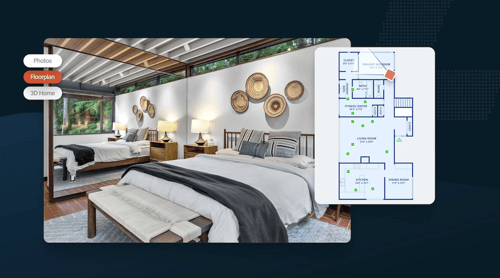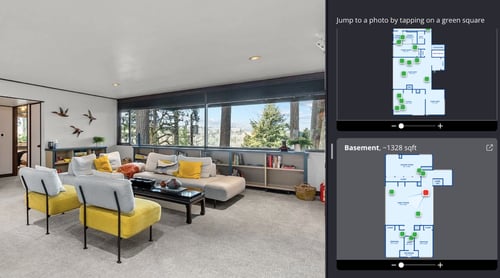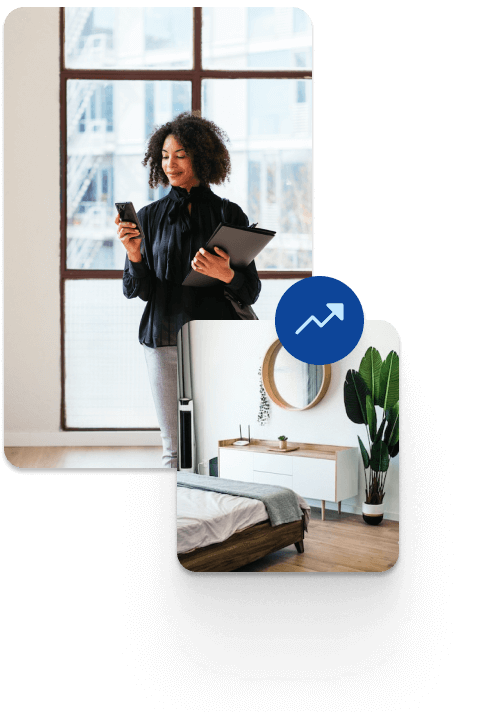What Are the Differences Between Real Estate Virtual Tours?
Not All Real Estate Virtual Tours are Alike – Know the Differences
Virtual tours have revolutionized the real estate industry by offering potential buyers a convenient and immersive way to explore properties from the comfort of their homes. By providing 360-degree views and interactive features, virtual tours enable buyers to make informed decisions before committing to in-person visits.
In this comprehensive guide, we will delve into the different types of virtual tours, their benefits and practical tips for creating and optimizing virtual tours that captivate your audience. Discover how virtual tours can help streamline the buying process, enhance your listings and elevate your real estate business. Visit listingmediaservices.com for professional virtual tour services that can help showcase your properties in the best light.
Comparing Different Types of Virtual Tours
Virtual tours have transformed the real estate industry by providing buyers with an immersive and convenient way to explore properties remotely. Among the various types of virtual tours, 360-degree tours can stand out for their ability to offer a realistic and comprehensive view of a space. Created by stitching together a series of overlapping photographs, these virtual tours allow viewers to virtually navigate through a property as if they were physically present.
3D virtual tours take the immersion to another level by employing 3D modeling software to create a realistic and interactive representation of a space. These tours provide viewers with the ability to explore every detail of a property, giving them a sense of the layout, dimensions and overall ambiance.
3D virtual tours provide a more dynamic experience compared to static 360-degree tours. Created using video footage, these virtual tours offer a first-person perspective, allowing viewers to feel as if they are actually walking through the property.
Interactive floor plans take the virtual tour to a different level by enabling viewers to navigate through a property using a digital floor plan. By clicking on different areas of the floor plan, users can explore each room and gain a clear understanding of the property's layout via the embedded virtual tour and positioning of still images within the interactive floor plan. Listing Media Services includes interactive floor plans with all of their real estate photography packages.
Lastly, dollhouse views provide a unique overview of a property by presenting a bird's-eye view of the entire space. This type of virtual tour is particularly useful for showcasing the exterior of a property and its surroundings; however, some providers limit their dollhouse view to interior rooms only.
360 Virtual Tours vs. 3D Virtual Tours
360 virtual tours use panoramic photography to create an immersive experience that allows viewers to navigate through a space as if they were actually there. They are typically created using a 360-degree camera that captures a series of high-resolution images, which are then stitched together to create a seamless panorama. 360 virtual tours can be viewed on a variety of devices, including computers, smartphones and tablets.
3D virtual tours, on the other hand, are created using 3D modeling and rendering software. They offer a higher level of interactivity than 360 virtual tours, allowing viewers to move around the space freely and zoom in on specific details.
When deciding which type of virtual tour is right for you, there are a few factors to consider. 360 virtual tours are typically less expensive to produce than 3D virtual tours, but 3D virtual tours offer a higher level of interactivity and realism. 360 virtual tours are better suited for showcasing large, open spaces, while 3D virtual tours are better suited for showcasing smaller spaces with intricate details.
Many real estate listings do not require the advanced 3D modeling inherent in this type of tour as a 360 panorama is adequate to give buyers a sense of the home, and many use the term “360 virtual tour,” “3D virtual tour” and just “virtual tour” synonymously.
Ultimately, the best type of virtual tour for you will depend on your individual needs and budget. If you are looking for a cost-effective way to showcase a large space, a 360 virtual tour may be the right choice for you. If you are looking for a more immersive and interactive experience, a 3D virtual tour may be a better option.
Zillow 3D Home Virtual Tours
Zillow 3D Home virtual tours actually use 360-degree panoramic images to build their tours despite its “3D” namesake, and offer a number of advantages over traditional 360 virtual tours. Created using a proprietary technology that captures high-resolution images of a home's interior and exterior, Zillow 3D Home virtual tours allow potential buyers to walk through a home as if they were actually there.
Zillow 3D Home virtual tours are a great way to market a home to potential buyers who may not be able to visit the home in person. In addition, Zillow 3D Home virtual tours can help potential buyers make more informed decisions about whether or not to purchase a home. By allowing buyers to virtually walk through a home, Zillow 3D Home virtual tours can help them get a better sense of the layout, size and condition of the home.
In addition to their use as a marketing tool, Zillow 3D Home virtual tours can also be used to create more immersive and engaging real estate listings. By including a Zillow 3D Home virtual tour in a real estate listing, sellers can help make their homes stand out from the competition and attract more potential buyers.
Here are some of the benefits of using Zillow 3D Home virtual tours:
* They are more immersive than traditional 360 virtual tours.
* They allow potential buyers to walk through a home as if they were actually there.
* They can help potential buyers make more informed decisions about whether or not to purchase a home.
* They can be used to create more immersive and engaging real estate listings.
Benefits of Virtual Tours
Virtual tours can offer several advantages for both potential buyers and sellers in the real estate industry. For potential buyers, virtual tours can provide a convenient and efficient way to explore properties without the need for physical visits. This can significantly save time and money, especially for those searching for properties in distant locations. Virtual tours allow potential buyers to narrow down their search by experiencing the layout, size and features of a property from the comfort of their own homes.
For sellers, virtual tours can be an effective marketing tool to help attract more potential buyers and sell properties faster. By showcasing properties through virtual tours, sellers can provide buyers with a more immersive and realistic view of the property, creating a stronger emotional connection and increasing the likelihood of a successful sale. Virtual tours can also help sellers reach a wider audience, as they can be easily shared online and accessed by potential buyers from anywhere in the world.
In addition to these practical benefits, virtual tours also offer several psychological advantages. They can help reduce stress and anxiety for both buyers and sellers by providing a sense of control and familiarity before an in-person visit or during the sales process. Virtual tours can also enhance the overall buying or selling experience by creating a more engaging and memorable interaction with the property.
Furthermore, virtual tours can be used to highlight specific features or unique selling points of a property. By strategically showcasing the most attractive aspects of a property, virtual tours can create a positive impression and increase the appeal to potential buyers. This can be particularly beneficial for properties with unique features or those located in competitive markets.
In summary, virtual tours provide numerous benefits for both potential buyers and sellers in the real estate industry. They offer convenience, efficiency and a more immersive experience, ultimately enhancing the overall buying or selling process.
How to Create a Virtual Tour
To create a virtual tour, you will need to take high-quality photos of the property. These photos should be well-lit and taken from different angles to give potential buyers a good sense of the space. Once you have taken your photos, you will need to edit them to ensure they are of the highest quality. This may involve cropping, adjusting the lighting and removing any unwanted objects from the photos.
Once your photos are edited, you can use a virtual tour software to create the tour. There are many different virtual tour software programs available, so you will need to choose one that best suits your needs and budget. Zillow 3D Home is a free service and available to use with iOS and Android smartphones. You can also receive the Zillow 3D Home virtual tour as part of a Listing Media Services’ complete turnkey media package.
Once you have chosen a software program, you will need to upload your photos and create the tour. This process can be time-consuming, but it is important to take your time and create a high-quality tour that will showcase the property in its best light.
If you do not have the time or resources to create a virtual tour yourself, you can hire a real estate photographer to do it for you. Real estate photographers have the experience and equipment necessary to create high-quality virtual tours that will help you better showcase your property. In addition, Listing Media Services offers a complete turnkey fast and reliable way to book a photographer and receive a complete package of real estate photography and media as soon as the next day*
*For Essentials package only, 7 days a week, excluding Sundays and holidays.
Tips for Optimizing Your Virtual Tour
Here are some tips for getting the most out of your virtual tour:
Use a camera that can capture high-quality panoramic photos. This technology is constantly evolving, and some older cameras provide inferior resolution to newer alternatives.
The photos you use in your virtual tour should be high-quality and well-lit. Blurry or dark photos couldl make your tour look unprofessional and could deter potential buyers from taking a closer look at your property.
Highlight unique features. Use your virtual tour to highlight the unique features of your property. This could include things like a gourmet kitchen, a spacious backyard or a luxurious master suite. By showcasing the best features of your property, you can make it more appealing to potential buyers.
Use descriptive language. When composing your virtual tour, ensure you use a platform that lets you use descriptive language at each waypoint to help potential buyers know which room they are located in and where arrows are leading them.
Choose the right camera positions. The camera positions you use in your virtual tour can make a big difference in how your property is presented. Make sure to choose angles that show off the best features of your property and avoid taking photos from unflattering angles.
Include a floor plan. A floor plan can be a helpful tool for potential buyers to get a better understanding of the layout of your property. If you have a floor plan available, be sure to include it in your virtual tour. Listing Media Services offers turnkey solutions with interactive floor plans included as part of their media packages.
Make it interactive. Virtual tours can be more engaging and interesting if they are interactive and integrate high resolution marketing photos within the experience.
Promote your virtual tour. Once you have created your virtual tour, be sure to promote it so that potential buyers can find it. Share on social media, post it on your website and include it in your marketing materials.
Frequently Asked Questions
What is a real estate virtual tour?
A real estate virtual tour is a digital representation of a property that allows potential buyers to virtually explore the space from the comfort of their own home. It typically includes 360-degree or 3D views, interactive features and multimedia elements to provide a comprehensive look at the property.
Are virtual house tours worth it?
Virtual house tours can be extremely beneficial for both buyers and sellers. They offer convenience, save time and provide a realistic preview of a property without the need for physical visits. Virtual tours can enhance the marketing of a property and attract more qualified buyers.
How much does a virtual tour cost?
The cost of a virtual tour for real estate can vary depending on the complexity of the tour, the size of the property and the service provider. Prices can range from a few hundred to several thousand dollars. It's advisable to research different providers and packages to find one that fits your budget and needs.
Can I create a virtual tour for free?
There are some platforms and tools available that allow you to create basic virtual tours for free. However, for more advanced features and customization, you may need to invest in paid virtual tour software or services. It's important to consider your requirements and the quality of the tour you wish to create.
How do I add a virtual tour to Zillow?
To add a virtual tour to a listing on Zillow, you can use Zillow 3D Home or other compatible virtual tour providers. Capture 360-degree images of the property using the app or service, then upload the tour to your Zillow listing. Zillow provides step-by-step instructions on how to add virtual tours to your listings for potential buyers to explore. You can also receive a Zillow 3D virtual tour as part of a complete Listing Media Services package.




